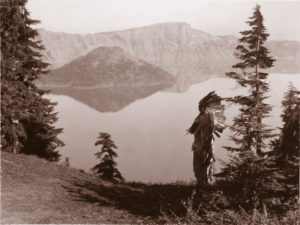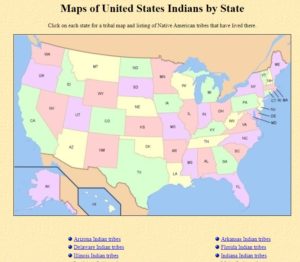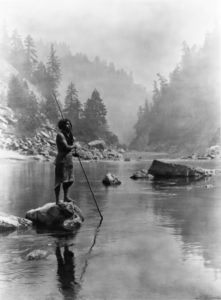 A brief in the Native American Resource Collection
A brief in the Native American Resource Collection
Center for Parent Information and Resources (CPIR)
Written by Joann Sebastian Morris
June 2021
___________________________
- Brief in PDF format
- Brief in Word
Our country exists in a time of deep social turmoil and racial tension. People ask: How can we close this divide? How can we be more inclusive? This brief discusses an action that can be taken easily, an act that models positive outreach to and respect for three populations: American Indians, Alaska Natives, and Native Hawaiians.
What is a Native Land Acknowledgment?
If you were fortunate to attend the Fall 2020 National Parent Center Capacity Building (NPCCB) Virtual Conference hosted by SPAN, or if you have since watched the conference videos available online at https://centersconnect.parentcenterhub.org, you heard the recently retired Director of the Center for Parent Information and Resources (CPIR), Debra Jennings, offer a Native land acknowledgment as part of her introduction.
We open by also acknowledging all the original tribes and villages whose lands we are on across this vast country now known as the United States. For me, coming to you today from what’s now known as the state of New Jersey, I acknowledge that I’m on the lands of the original peoples known as the Lenni Lenape or Delaware.
Similar acknowledgments, each uniquely worded (based on the state where the speaker resides) opened the virtual workshops of five presenters from Arizona, Hawaii, New Mexico, New York, and Washington during the same NPCCB conference.

Northwestern University’s land acknowledgment
In recent years, across academic conferences, cultural gatherings, and sporting events, it is becoming commonplace for speakers to open by paying respect to the Native American communities—past and present—on whose original lands the event is taking place. Such statements are known today as Native land acknowledgments. They are occurring with increasing regularity in the US, Canada, Australia, and New Zealand. (Reference 1) A Canadian university research group offers this straightforward definition of land acknowledgment:
“A Land Acknowledgment is a formal statement that recognizes the unique and enduring relationship that exists between Indigenous Peoples and their traditional territories.”
(Reference 2)
Typically, land acknowledgments are offered at openings of special events, such as conferences, parent celebrations, and Board meetings. Some school systems offer a land acknowledgment with each morning’s announcements. (Reference 3) The Detroit Waldorf School posts its land acknowledgment at the top of the school’s newsletter. (Reference 4)
By creating a Native land acknowledgment, your Parent Center recognizes displaced or disappeared peoples and tribes, while simultaneously acknowledging contemporary local Native communities. It’s a concrete way to show awareness of and respect for often-overlooked and underserved parent groups. It’s also a practice that’s deeply meaningful to Native communities, whose members will respect you in return.
Why are Native Land Acknowledgments Important?
 Native land acknowledgments offer the opportunity to recognize and honor the thriving Indigenous inhabitants who were the original stewards of this continent as well as the Hawaiian Islands. They are intended to create awareness of histories that have been forgotten or suppressed. For Parent Centers, Native land acknowledgments offer the opportunity to establish respectful and enduring relationships with Native parents of children with disabilities.
Native land acknowledgments offer the opportunity to recognize and honor the thriving Indigenous inhabitants who were the original stewards of this continent as well as the Hawaiian Islands. They are intended to create awareness of histories that have been forgotten or suppressed. For Parent Centers, Native land acknowledgments offer the opportunity to establish respectful and enduring relationships with Native parents of children with disabilities.
In other briefs in CPIR’s Native American Resource Collection, authors have pointed out the many ways in which Native American communities have been overlooked, ignored, or misrepresented nationally. For example, in textbooks and in classroom practice, American Indians, Alaska Natives, and Native Hawaiians are spoken of infrequently, are stereotyped as being in the way of progress, and are rarely addressed past the late 1800s. Native peoples, including Native Hawaiians living outside of Hawaii, are seldom portrayed accurately in contemporary society and, too often, are ignored when data on U. S. “ethnic groups” are collected. Such behaviors result in the near erasure of Native peoples from contemporary thought. Native land acknowledgments counter that invisibility, acknowledge our country’s history, and represent inclusion of the Native perspective.
How Do I Prepare a Native Land Acknowledgment?
- Conduct research on the peoples, tribes, and nations that originally inhabited your area, as well as those Native groups currently residing in your service area. (Consult, for example, the maps and information available at: http://www.native-languages.org/states.htm)

- Reach out to local Native communities and organizations to ask how local tribes and groups prefer to be acknowledged. For example, do they prefer their traditional or Anglicized names to be used?
- Determine how detailed and lengthy a statement you wish to create.
- Use appropriate language, including past, present, and future tenses. Native peoples are still here; do not speak of them only in the past tense.
- Draft your statement and seek the counsel of local Native people before finalizing the wording.
Remember that there is no one way of drafting a land acknowledgment. Each of the 574 federally recognized tribes, 100+ state recognized tribes, and Native Hawaiian communities may have a slightly different protocol they prefer to follow. Reach out to them; they will appreciate your asking.
Tips for Delivering a Native Land Acknowledgment
- Make the acknowledgment as a verbal statement at the beginning of a program or event.
- Ensure that the person making the acknowledgment statement is the host of the event or gathering, regardless of that person’s race or ethnicity.
- Practice your Parent Center’s Native land acknowledgment statement out loud, especially the pronunciation of Native names and terms, before sharing it. (For guidance, turn to your local Native community, or consult sources such as http://www.native-languages.org/guides.htm)
- Offer the land acknowledgment with sincerity and respect, without being overly somber.
- Extend your opportunities for sharing the acknowledgment—for example, add it to your Center’s newsletter, website, or staff members’ email signatures.
- Remember that your statement extends beyond the words. Moving forward together with local Native parents and communities is implied.
Templates and Sample Land Acknowledgments
A basic acknowledgment (Reference 5) could look like the following:
“We would like to begin by acknowledging that we are on the traditional lands of the ________ people.”
It is often common for an acknowledgment to honor elders, such as in the following:
“I would like to respectfully acknowledge that this meeting is being held on the ancestral lands of the ________ people, and pay my respects to their elders both past and present.”
Parent Center staff members may wish to begin with a basic acknowledgment, then expand it as they conduct more research, gain familiarity with local Native communities, and become comfortable with the acknowledgment protocol. Centers may find the two Native land acknowledgments cited below helpful. They are examples of detailed acknowledgments that include historical and contemporary references. The first example also incorporates Native Hawaiian words.

Example 1
It is with profound reflection that I offer up this Land Acknowledgment, acknowledging Hawaiʻi as an indigenous space whose original people are today identified as Native Hawaiians. The ‘āina on which we gather is located in the ahupuaʻa of Waikīkī, in the moku of Kona, on the mokukpuni of Oʻahu, in the pae‘āina of Hawaiʻi.
I recognize that her majesty Queen Lili‘uokalani yielded the Hawaiian Kingdom and these territories under duress and protest to the United States to avoid the bloodshed of her people. I further recognize that generations of indigenous Hawaiians and their knowledge systems shaped Hawaiʻi in a sustainable way that allows me to enjoy her gifts today. For this I am truly grateful. (Reference 6)
Example 2
Northwestern (University) is a community of learners situated within a network of historical and contemporary relationships with Native American tribes, communities, parents, students, and alumni. It is also close to an urban Native community in Chicago and near several tribes in the Midwest. The Northwestern campus sits on the traditional homelands of the people of the Council of Three Fires: the Ojibwe, Potawatomi, and Odawa, as well as the Menominee, Miami, and Ho-Chunk nations. It was also a site of trade, travel, gathering, and healing for more than a dozen other Native tribes and is still home to over 100,000 tribal members in the state of Illinois. (Reference 7)
______
References
Reference 1 | U. S. Department of Arts and Culture. (n.d.). Honor Native land: A guide and call to acknowledgment (p. 2). Online at: https://usdac.us/nativeland/
Reference 2 | Ibid., p. 3
Reference 3 | Mills, S. (2018, May 30). “Land acknowledgements are a good first step, but there’s a lot more work to be done” in Today’s Parent. Online at: https://www.todaysparent.com/kids/school-age/land-acknowledgements-are-a-good-first-step-but-theres-a-lot-more-work-to-be-done/
Reference 4 | Smith, R. (2020, December 16). “Detroit Waldorf School acknowledges Anishinaabe land” in Win Awenen Nisitotung, 41(12), 9. Download the issue from the 2020 list at: https://www.saulttribe.com/newsroom/sault-tribe-newspaper/newspaper-download-files?folder=2020
Reference 5 | Native Governance Center. (2019). A guide to Indigenous land acknowledgment. Minneapolis, MN: Author. Online at: https://nativegov.org/a-guide-to-indigenous-land-acknowledgment/
Reference 6 | “UH Manoa offers land acknowledgment to Native Hawaiians at national conference” in UH News (2019, October 31). Online at https://www.hawaii.edu.news/2019/10/31/uh-manoa-land-acknowledgment-to-native-hawaiians
Reference 7 | “Northwestern University. (n.d.) Land acknowledgment.” In Native American and Indigenous Initiatives. Evanston, IL: Author. Online at: https://www.northwestern.edu/native-american-and-indigenous-peoples/about/Land%20Acknowledgement.html
______________________
The CPIR is made possible through Cooperative Agreement Number H328R180005 between OSEP and the Statewide Parent Advocacy Network (SPAN). The contents of this document do not necessarily reflect the views or policies of the Department of Education, nor does mention of trade names, commercial products, or organizations imply endorsement by the U.S. Government. This product is public domain. You are free to copy and share it, citing as:
Morris, J.S. (2021, June). Native land acknowledgment: The why and how for Parent Centers. Newark, NJ: Center for Parent Information and Resources. Online at: https://www.parentcenterhub.org/native-land-acknowledgment/

